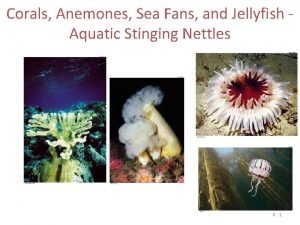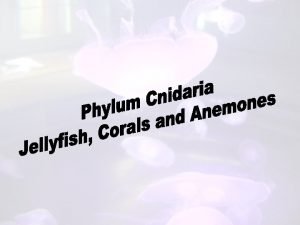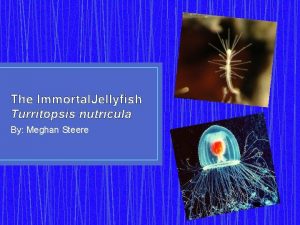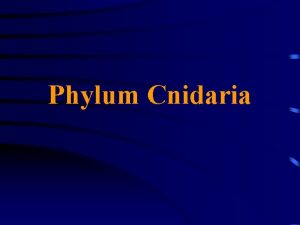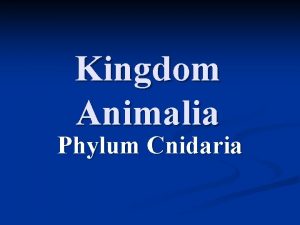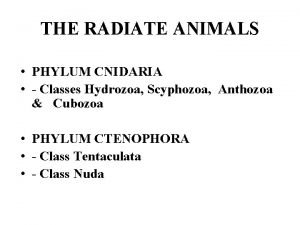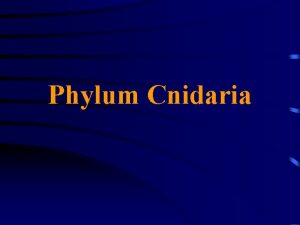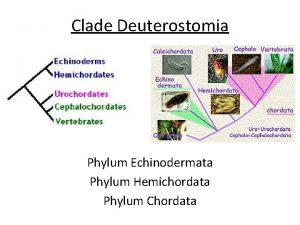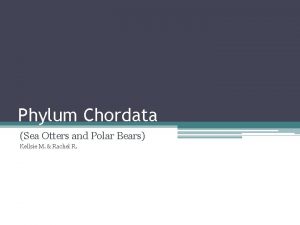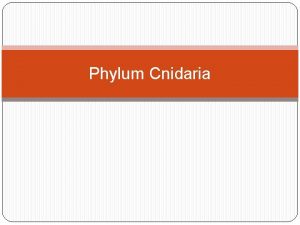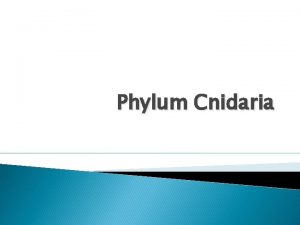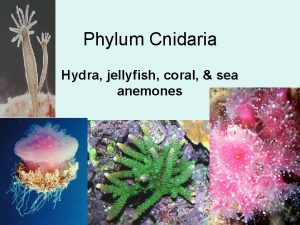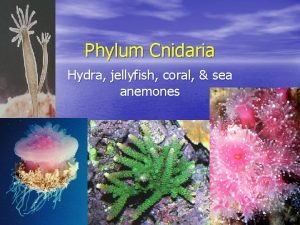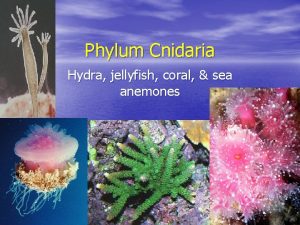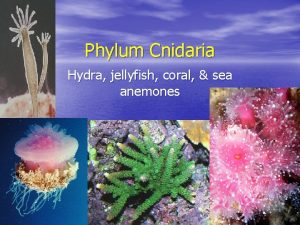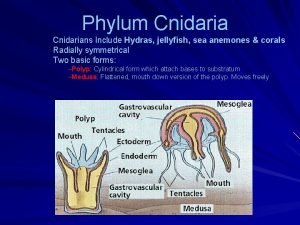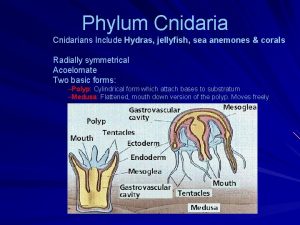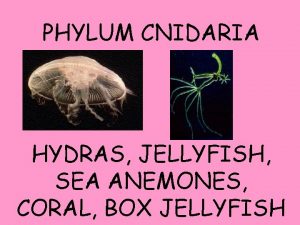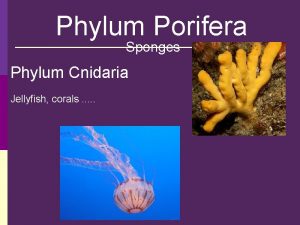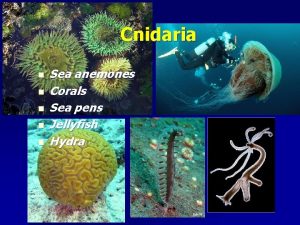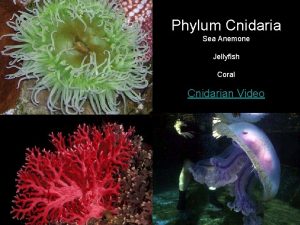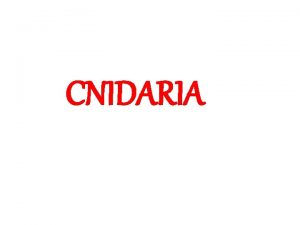Phylum Cnidaria Sea Anemones Jellyfish Corals 1 2

















- Slides: 17

Phylum Cnidaria Sea Anemones, Jellyfish, & Corals 1

2

I) Cnidarians A) Phylum Cnidaria 1) Means “to have stingers” B) C) D) E) True Tissues Radial Symmetry Radial Nerve Net Partial Digestive Tract 1) Only have one opening F) Some 10, 000 species known G) First appeared some 540 -650 Million Years 3 Ago

II) Morphology A) Oral surface 1) Where the mouth is B) Aboral Surface 1) Opposite side of the mouth C) Central mouth / anus surrounded by tentacles D) Mouth opens to gut 4

II) Morphology E) Nematocysts 1) Cnidae 2) Unique stinging structure 5

II) Morphology F) Polyp 1) Sac-like attached stage with mouth & tentacles orientated upwards G) Medusa 1) Jellyfish, an upside down polyp for swimming H) Some cnidarians go through both life stages, others only one 6

II) Morphology I) Epidermis 1) External cell layer J) Gastrodermis 1) Lines the gut K) Mesoglea 1) Middle, gelatinous layer 7

III) Feeding A) Practically all are carnivores B) Use nematocysts primarily to capture prey 1) Some contain toxins C) Ingest into mouth D) Extracellular digestion 1) Initial digestion that takes place outside the cells (in the gut) E) Intracellular digestion 1) Final digestion within cells lining the gut 8

IV) Reproduction 9

10

V) Classes of Cnidarians A) Hydrozoans 1) Leathery or bushy colonies of polyps 2) Siphonphores: drifting colonies of polyps B) Scyphozoans 1) Jellyfish 2) Larger, bell-shaped medusas C) Cubozoans D) Anthozoans 1) Sea Anemones 2) Corals 11

A) Hydrozoans 12

13

B) Scyphozoans 14

C) Cubozoans 15

D) Anthozoans 16

D) Anthozoans 17
 Anemones phylum
Anemones phylum Coral phylum
Coral phylum Cnidaria characteristic
Cnidaria characteristic Class scyphozoa
Class scyphozoa Disappearing corals module c
Disappearing corals module c Turritopsis nutricula
Turritopsis nutricula Pheumatophore
Pheumatophore Obelia medusa diagram
Obelia medusa diagram Phylum cnidaria general characteristics
Phylum cnidaria general characteristics Cnidaria characteristics
Cnidaria characteristics Cnidaria pronounce
Cnidaria pronounce Difference between hydrozoa scyphozoa and anthozoa
Difference between hydrozoa scyphozoa and anthozoa General characteristics of cnidaria
General characteristics of cnidaria Cnideria diagram
Cnideria diagram Clade deuterostomia
Clade deuterostomia Parasite classification
Parasite classification 8 phyla of animal kingdom
8 phyla of animal kingdom Polar bear phylum
Polar bear phylum


